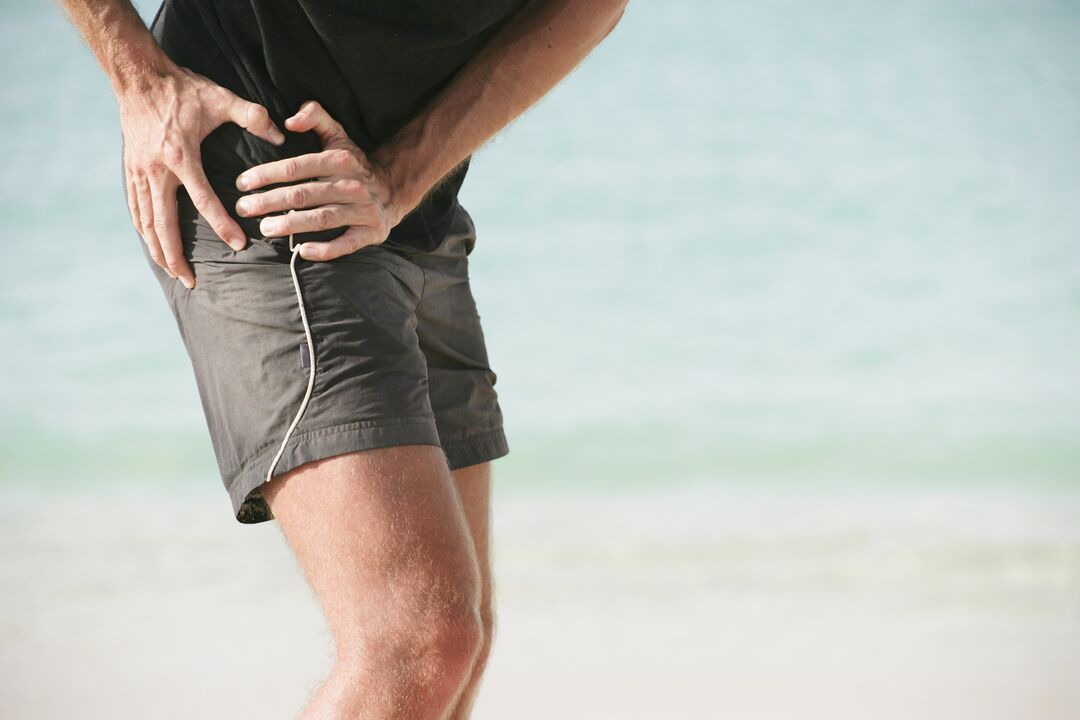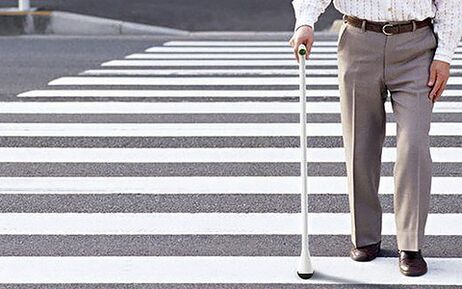It is necessary to treat arthrosis of the hip joint thoroughly, and the help is to eliminate the provoking factors of the disease and to eliminate pain, as well as inflammation. Thus, it will be possible to eliminate the unpleasant symptoms associated with pain and dysfunction of the limb that occur with this disease. Therefore, the diagnosis of this pathology is important and consists of X-ray examination in several forecasts.
Causes and rates of flow
Precipitating factors that lead to the development of arthritis include the following events:
- hereditary tendency;
- weakness of the musculo-articular corset;
- anomalies in the structure of the skeleton;
- history of trauma;
- inflammation;
- autoimmune processes;
- purulent infections;
- heavy physical labor or sports;
- old age
There are 3 stages of the pathological process. Thus, 1st degree arthrosis of the hip joint is characterized only by the appearance of pain after physical exertion, and there are no other symptoms of the disease. The next stage is characterized by constant pain, including at rest. X-ray examination shows narrowing of the joint space. With proper and timely treatment, grades 1 and 2 are reversible conditions, but in the absence of therapy, they quickly turn into a more severe form. As arthrosis progresses further, the pain becomes unbearable and limits the mobility of the femur in the hip joint. The muscles of the lower limbs atrophy and do not perform their functions. Detection of osteophyte growths is characteristic for the 3rd degree of severity of arthrosis of the hip joint.
Symptoms of pathology

The first sign of the disease is severe pain in the thigh when moving.
Osteoarthritis of the hip joint is characterized by the appearance of such manifestations:
- pain syndrome caused by physical activity;
- fever, body temperature varies from normal to subfebrile;
- atrophy of the muscle-ligament corset;
- lameness;
- deformation of extremities associated with the formation of massive edema and osteophytes;
- changes in limb length;
- Grunting noises when moving the TBS.
Deforming arthrosis develops more in the right than in the left hip joint.
Signs are expressed depending on the stage of the process. Often, the patient's entire leg hurts completely, which is associated with damage or inflammation of the nerve endings passing near the joint. At the same time, arthrosis of the hip joint of the 2nd degree is characterized by the appearance of pain at rest. Also, there is stiffness in movements, especially in the morning. It is caused by the accumulation of intra-articular exudate around the neck and head.
Hyaline cartilage atrophies, so the joint space narrows significantly, which provokes the appearance of a characteristic crisis during movement, shortening the length of the limb. At this time, the thigh bone is destroyed and the density of its tissues is lost. Osteopathy is progressive and associated with tissue trophic disorders. The development of chronic inflammation is an inciting factor in the destruction of the hip joint. Therefore, pathological ossification or foci of osteophytes appear. This is characteristic of 2 3, and sometimes the first degree of the course of the disease.
How is the diagnosis made?
A traumatologist can determine arthrosis of the hip joint during an external examination and when asking the patient about the course of the disease. X-ray examination is used to confirm the diagnosis. In the picture, arthritis appears as a seal and deformation of the pelvic ends of the thigh. This significantly increases the size of the head. An important symptom of the disease is the formation of osteophytes, which is well detected using this method.
What is dangerous?

The hip joint is part of the human musculoskeletal system. Therefore, the violation of its functions leads to immobilization of the patient and over time leads to the onset of disability. In addition, the inflammation spreads to the pelvic bones, causing urinary and defecation disorders. It is possible to disrupt the nerve endings passing near the head of the femur, which causes a violation of the tactile sensitivity of the limb.
The progression of the disease leads to the formation of cartilage defects, its wear and cracking. Cartilage particles enter the joint cavity and cause aseptic or "sterile" inflammation, which occurs without the participation of pathogens.
In addition, the inflammatory process spreads to the bone tissue, causing aseptic necrosis (necrosis) of the acetabulum and femoral head. Bone growths that damage the surrounding tissues, intensify the inflammatory process and cause severe pain - osteophytes.
In the advanced stage of the disease, there are signs of periarthritis, periarticular soft tissues (muscles, ligaments, nerves, vessels) are affected. The end of the disease is the complete destruction of the joint, which leads to its immobilization - ankylosis of the hip joint.
Treatment of arthrosis of the hip joint
Treatment of joint diseases should be aimed at eliminating the cause of the process. It is necessary to treat with the use of drugs, and if necessary, they resort to surgical intervention. The complex effect also includes folk remedies in the form of herbal medicines, which should complement the main therapy. When the exacerbation of the disease is eliminated, physiotherapy is applied. They will also help if there is an initial pathological process. Prevention of arthrosis is through proper nutrition. The diet should limit foods rich in salt.
With significant severity of the lesion, joint replacement, including the prosthesis of the pelvic part of the joint, is recommended.
Preparations
Conservative treatment can eliminate the unpleasant symptoms caused by hip arthrosis in the early stages of development. It helps to anesthetize the soft tissues of the thigh and pelvis, and also eliminates some other unpleasant manifestations. For this purpose, non-steroidal anti-inflammatory drugs based on Diclofenac or Ibuprofen are used. They should be administered intramuscularly, taken orally, or rubbed on the affected area. Muscle relaxants are also used to reduce muscle spasm in the affected limb. Drug treatment consists of prescribing a long course of chondroprotectors and vitamin complexes.
Physiotherapy
In the initial stages of the course, it is possible to treat arthrosis of the hip joint with the help of physiotherapy. It can also be used after long-term exposure to the drug and after removing the symptoms of the inflammatory process. Such intervention can help reduce muscle spasm and restore the functional activity of the joint.
If the patient has an initial stage of pathology, then it will be useful to do the following types of physiotherapy:
- magnetotherapy;
- electrophoresis;
- paraffin applications;
- mud treatment;
- baths with essential oils.
Folk treatment

Treatment of arthrosis of the hip joint using non-traditional methods involves the use of various tools. For this purpose, you can also use crushed mint and aloe leaves with the addition of vaseline for viscosity and better application. Celandine soaked in olive oil for 2 weeks will be useful. Horseradish root compresses or therapeutic mud wraps are also used.
In most cases, traditional methods of treating rheumatic pathology include the use of various medicinal ointments, creams and gels as local therapy. Traditional medicine also uses medicines in the form of ointments. Natural herbs are usually used for their preparation.
Treatment of arthrosis with folk remedies at home is not able to completely get rid of the disease, but it is quite possible to reduce clinical symptoms such as pain, swelling and inflammation.
Exercise therapy and massage
Hip arthrosis with a mild course is treated with such exposure. Manual therapy is indicated after the complete elimination of inflammation and pain. Massage should be performed by a doctor after examining the patient's medical history. More often, a course of 15 massage sessions is prescribed. Home treatment involves the use of special gymnastic exercises that will help restore the joint's full functional activity.
Severe arthrosis is not treated with massage and exercise therapy.
Prevention
Sufficient physical activity will help prevent arthrosis of the hip joint, but physical activity causes rapid wear of cartilage tissue, so it is not recommended for people who are especially prone to developing joint diseases. Untreated hip dislocation or other limb injuries are also dangerous. Proper nutrition with sufficient intake of vitamin and mineral complexes is also important.



































